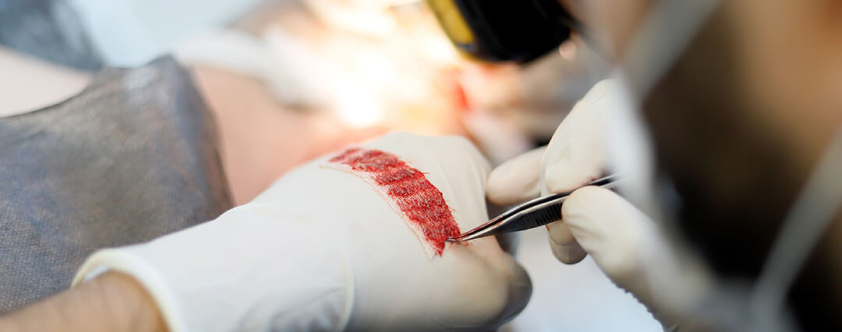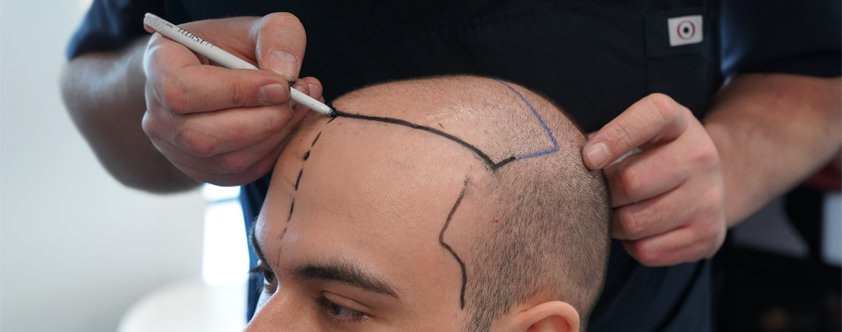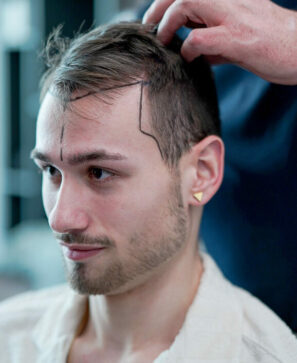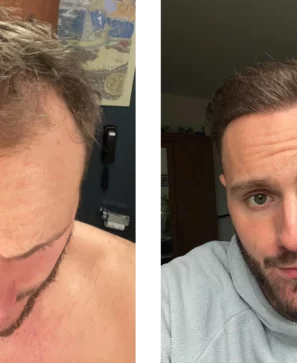Jogging after hair transplantation: danger due to sweat
Jogging is associated with certain dangers for the time being after a hair transplant. Even though running is an important part of your everyday life, you cannot simply ignore the risks following a natural hair transplant. We offer you comprehensive information on this. In doing so, we explain why sweat can be problematic for transplanted hair and how long it is recommended to go without.
Underestimated danger of jogging after hair transplantation
Although jogging after hair transplantation sounds relatively harmless to many people, endurance sports initially pose an extremely serious risk to the transplanted hair. In the first few days, even much lighter efforts are still an absolute no-no.
This is because your scalp with the transplanted hairs is still very sensitive following the hair implantation. The individual injuries at puncture sites with inserted hair follicles are extremely tiny and yet must be considered together as one large wound.
Equally important is the protection in the zones from which hair specialists extract follicles during hair transplantation.
For the success of hair transplants, it is important that the healing processes in all affected areas run as smoothly as possible and without disruptions.
In addition, jogging after hair transplantation remains problematic for the time being, because the transplanted hair follicles must first grow firmly.
Meanwhile, it is crucial that you do not damage protective crusts on the scalp with your behavior.
Sweat during endurance sports is one of several threats here. Especially if you are jogging outside in the great outdoors, the risk of falling and sun exposure are added potential problems.

Additional danger of the falls and sun rays
As soon as you fall during an endurance run, serious injuries can permanently jeopardize both the growth of hair follicles and the healing of the scalp.
An impact with strong shocks against the head even literally crushes the follicles in extreme cases. Thus, there is a risk that the desired results will not be visible in the end.
In the recipient and donor area, head impacts are also conceivable causes of bleeding. As a result, patients must expect further complications during the healing and growing phase.
Inasmuch as you jog in the sun too early, the UV rays may cause sunburns on the sensitive scalp. Those who completely negligently expose the treated areas to sunlight immediately will cause the transplanted hair follicles to die in particularly severe cases.
In the worst case, because of sweat, falls and sun exposure, you may even develop infections or other diseases that threaten your hair health. Protective headgear is also problematic and thus often not a solution to the impending dangers.

Why is sweat a problem for the scalp
Sweating while jogging after a hair transplant is a potential problem because softening of the crusts can be associated with significant complications. As long as the hair follicles are not firmly attached, the crust formation initially provides a secure hold.
Follicles are lost at worst, insofar as sweating during early endurance sports severely damages the crusts. Infections with an additional risk to the scalp are another conceivable consequence of sweating.

When can patients start jogging again after hair implantation?
Following an autologous hair transplant, hair specialists generally advise against practicing any type of sport for at least two weeks. After that, however, it is definitely not advisable to start jogging again directly without any restrictions after hair transplantation.
In general, an extremely cautious and slow re-entry into the sport is recommended. You must approach the full load carefully over the course of several weeks. For endurance runs, therefore, only small laps are considered at first.
Prolonged problems in the open air
Jogging in the open air is still very problematic in the third week after hair implantation. This is because sun exposure, just like the risk of falling, then still poses an increased risk to the transplanted hair follicles.
You can discuss with the doctor whether jogging in a safe area under a cloudy sky is an option. However, if you avoid the sun by endurance running in overly dark lighting conditions, the limited visibility again increases the risk of falls.
A large sports hall without obstacles is therefore sometimes the better environment for the start.
More than 14 days after hair transplantation, sweating continues to be a conceivable cause of complications once you deal with it incorrectly. It is very important that you let the sweat run off naturally and just dab it very carefully without friction at the end of a training session.
That is why you must not use too tight headgear for a relatively long time. Unsuitable caps or hats otherwise jeopardize the smooth flow of perspiration and instead cause a buildup of sweat on the scalp, so to speak.
Therefore, if you want to protect your head from the sun with particularly light hats, these headgear could, in turn, literally fly off during fast running movements or due to gusts of wind.
For these reasons, many experts advise waiting at least six weeks before jogging with a full load. In case of doubt, you should therefore consult with your treating hair specialist.

Which other sports should affected people avoid for the time being?
Conclusion Patience in demand and cautious entry
Before you start jogging after a hair transplant, patience is absolutely necessary. Following a hair transplant, any form of endurance sport remains an absolute no-no for two weeks, because the risks associated with sweating are far too high for the protective crusts on the treated areas.
However, once you jog outside, the environment and weather can lead to further threats to hair implant results. If you want to avoid risks from sun exposure and falls with head impacts, at least six weeks of waiting is considered advisable.
A cautious start to training and consultation with treating physicians before full exertion will often save you from problems.
Free Hair Analysis
Click on the button and get your individual treatment price in only 2 minutes!



